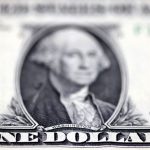
(Reuters) -The dollar struggled for direction on Tuesday ahead of key data that could provide further clues on the U.S. Federal Reserve’s policy path, while the yen rose after figures confirmed inflation was above the Bank of Japan’s (BOJ) target.
Japan’s core consumer inflation exceeded forecasts, keeping alive some expectations that the BOJ might end negative interest rates by April.
“The yen rose after the release, but rather modestly considering its heavy short positioning and the magnitude of the sell-off since the start of the year,” said Francesco Pesole, forex strategist at ING.
“After all, the cautious BoJ is unlikely to send strong signals of an earlier move than April, and our economics team is doubtful policymakers will be able to hike before June at all.”
The yen rose 0.35% to 150.18. It hit in mid-February 150.88, its highest level since Nov. 16.
Leading cryptocurrecy Bitcoin hit a two-year high in Asian trade on signs of large players buying the cryptocurrency.
It was last at $56.360 after hitting $57,036 in the Asian morning, its highest since late 2021. Ether was at $3.232 after hitting $3,275, its highest since April 2022.
The U.S. dollar index, which measures the currency against a basket of peers, including the yen, euro and sterling, was down 0.05% at 103.71.
Markets have recently pulled back expectations on the timing and size of Fed rate cuts this year, as the U.S. economy remains strong and inflation pressures failed to subside significantly.
The release of the PCE deflator on Thursday is one of the key highlights in the U.S. calendar this week and could suggest less aggressive bets on Fed easing.
The euro was up 0.1% versus the greenback at 1.0859. It has steadily risen since mid-February when it hit 1.0695, its lowest since Nov. 14.
Analysts said the single currency strengthened as markets scaled back their bets on future European Central Bank rate cuts to 90 bps by year-end, amid encouraging signals from the economy, which supports expectations for a pick-up in growth in the second half of 2024.
“We expect the single currency to rise to 1.10 against the greenback in the short term,” said Roberto Mialich, forex strategist at Unicredit (BIT:CRDI).
“Should Fed chair Powell reiterate the higher for longer rate outlook at his testimony next week the euro could drop a bit but not over 1.05,” he added.
Fed Chair Jerome Powell delivers the semiannual monetary policy testimony before the Senate Banking Committee next week.
German states, France and Spain, will release inflation data on Thursday ahead of the euro area’s figures due on Friday.
ECB officials sounded more cautious about a quick easing of monetary policy, with President Christine Lagarde saying that wage growth remains robust, while the ECB dove Yannis Stournaras ruled out a rate cut before June.
Market participants label as hawks central bank officials who advocate a tight monetary policy to control inflation, while doves focus more on economic growth and the labour market.
Elsewhere, the Australian dollar added 0.2% to $0.6552 ahead of monthly consumer price data, due Wednesday.
The kiwi eased 0.1% to $0.616, with traders gearing up for what could turn out to be a significant policy meeting by the Reserve Bank of New Zealand (RBNZ) on Wednesday.
Markets are pricing in a one-in-three chance the RBNZ will raise its 5.5% official cash rate to combat stubborn inflation.
“Given rich NZD positioning and the current rates pricing, if we see the RBNZ leave the cash rate on hold it may cause immediate NZD selling,” Chris Weston, head of research at Pepperstone, wrote in a note.
“I am seldom one to advocate trading a central bank meeting in isolation, but I see the risk skewed for a higher AUDNZD on the statement.”
To read the full article, Click Here

